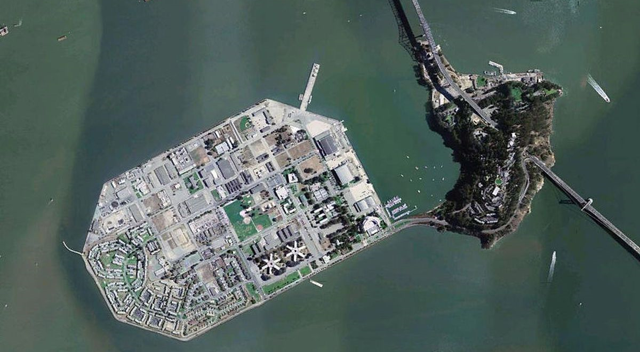
Treasure Island development prepares to evict hundreds
Some ousted households qualify for aid, while others must largely fend for themselves.
Treasure Island, the artificial land mass with some of San Francisco’s best views, will see new development over the next four years, bringing thousands of homes and related businesses to the area.
But first: What to do with the residents who live there right now?
Last Tuesday the San Francisco Board of Supervisors approved a $1.25 million contract with a private company to oversee the eviction and relocation of hundreds of Treasure Island households so that their homes can be demolished and redeveloped.
Some San Franciscans on the island will qualify for economic assistance, including the possibility of moving into a new home. Other are largely on their own.
According to the approved contract:
When fully developed the project will includ e 8,000 new residential units, including approximately 2,173 various income levels of affordable housing units, accommodating 20,000 to 25,000 people.
The plans also includ e [sic] up to 500 hotel rooms, up to 550,000 square feet of restaurants, retail, office and commercial space, a marina and 300 acres of parks and open space.
The Treasure Island Development Authority [TIDA] advertises a picturesque future island communitythat “draws heavily upon the natural setting and features of the islands—sun, wind, views both of and from the Islands, shorelines, topography, soils, habitat, and vegetation.”
The new project even dedicates one percent of its overall budget to new public art installations, which the San Francisco Arts Commission calls “an unparalleled opportunity [for] bold, imaginative, and forward-thinking contemporary art.”
Sounds great, except for those who live on Treasure Island at present.
The city contract also points out that “there are approximately 675 households on Treasure Island, including 250 affordable households and 425 market-rate households.”
Under the present terms, all of those living in affordable housing on Treasure Island “are entitled to a Transition Housing Unit and related moving expenses,” as provided by some of that $1.25 million.
Of those living in market-rate homes, the 220 households in place before the city approved new island development in 2011 “are entitled to cash payment or a choice of a Transition Housing Unit that would be rented in a newly constructed TIDA building plus related moving expenses, or a down payment toward the purchase of a new unit.”
The cash payments are almost $6,300 for each working adult tenant, plus nearly $4,200 for each minor, disabled, or elderly resident.
But as for the 205 households in market-rate housing who gambled on moving in after 2011? They get “advisory services” for relocating.
The Treasure Island project involves four different developers pouring billions into the largely overlooked neighborhood. The first phase will includ e 2,100 new homes and should be done sometime in the next two or three years, but the entire thing won’t wrap up until 2030 or so.
/cdn.vox-cdn.com/uploads/chorus_image/image/56840947/667px_Wfm_yerba_buena_treasure_islands_usgs.0.jpg)
